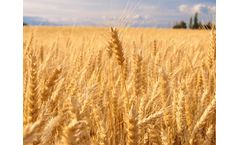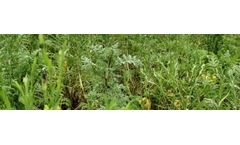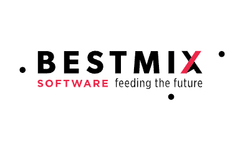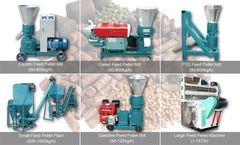Refine by
Nutrient Availability Articles & Analysis
27 news found
In a recent NUTRI-CHECK NET webinar, ADAS crop physiologists Dr Sarah Kendall and Dr Tamara Fitters shared how grain analysis and post-harvest reviews can play a pivotal role in refining nutrient strategies for future seasons. Many farmers are already diligent about planning their crop nutrition at the beginning of the season, but few revisit and adjust those plans as the season ...
Tell us how you make nutrient management planning decisions following catch or cover crops As part of the new Cover crop decision support tool (DST) scoping project funded by AHDB, Anglian Water, Wessex Water and Southern Water, ADAS is carrying out a survey to understand nutrient management planning decisions following cover (or catch) crops. ...
If you thought that insect production was a thing of the future, think again. Recently Dr. Ir. Karin Jansen, Presales Consultant at Bestmix Software. visited Protix, a highly innovative company that is the world leader in producing black soldier flies with almost 200 employees. Protix produces sustainable insect proteins and other ingredients by growing insects on food waste. Situated in ...
ByBESTMIX
As emerging technologies and advances in animal nutrition bring more precision to livestock production, AgroCares and Trouw Nutrition, Nutreco’s livestock feed business, are pleased to announce the renewal of their NutriOpt On-site Adviser agreement. Launched in 2018 and subsequently enhanced with species-specific knowledge, NutriOpt On-site Adviser is an easy-to-use mobile resource that ...
Does going to the extreme in fertilizer application overcome yield limitations? When it comes to plant development and yield, imbalance is more likely to threaten soil health, production and your pocketbook. Instead, achieving nutrient balance is crucial to crop success. With that in mind, we reflect on the often-perceived conflicting theories – Liebig’s Law of Minimum and ...
Harp Renewables is proud to announce that our Infusion Fertiliser has been shortlisted for the Best Garden Product category at the prestigious Innovation Awards at the Hardware Show 2024. This recognition highlights the company’s commitment to developing innovative and eco-friendly products that contribute to a sustainable future. The innovation awards, held annually, celebrate the most ...
If you thought that insect production was a thing of the future, think again. Recently I visited Protix, a highly innovative company that is the world leader in producing black soldier flies with almost 200 employees. Protix produces sustainable insect proteins and other ingredients by growing insects on food waste. Situated in Bergen op Zoom, close to other feed/food producers, Protix is ideally ...
ByBESTMIX
When incorporated into the soil, biochar locks carbon, preventing it from being released into the atmosphere. 2.Nutrient Retention: Biochar acts as a sponge, retaining essential nutrients like nitrogen and phosphorus in the soil. This results in increased nutrient availability to plants, fostering their growth. Improved Crop ...
A black layer of pure humus? Incredibly rich in nutrients and essential to plant life. These layers are a result of the environment and the ecosystem that the soil is in, and the type of layers also determine a lot about the ecosystem above ground. ...
Greater die thickness creates improved retention time of feed in the pellet die, thermal reactions in nutrients, feed particle adhesion and pellet quality. 5. Manipulate Diet Formulation. ...
Generate is a natural product that utilizes patented Microbial Catalyst® technology to liberate nutrients in the soil for greater uptake, healthier crops and improved soil and plant health in a wide range of crops. ...
ByAgnition
The selective distribution agreement announced today is a model for the future adoption of a ground-breaking approach developed by Heliae – to provide nutrients to growing crops through accelerated microbial growth while improving the health and structure of soils. ...
In fact, microbes play an important role in making nutrients available to plants. A recent review paper from Xinda Lu and his team looks at different roles that various soil microbes have in soil’s nitrogen cycle. ...
Both are in the legume family and can take nitrogen from the air and metabolize it into a plant nutrient. “We established cover crops within this young carambola stand to enhance overall soil quality,” says Freidenreich. ...
“It increases the yield and quality of crops, including reducing the supply of water”, explained the manager Agroliner , Donato Garcia, “the humidity is maintained throughout the day and the plant has water and nutrient availability”. Donato Garcia explained that although Integrate takes three years on the market, wanted to order these ...
“This includes shrink-swell behavior, soil structure, availability of nutrients, and the fate of contaminants that enter the soil,” according to Judith Turk, University of Nebraska-Lincoln. ...
Our soil is depleted of essential nutrients, fungi and bacteria due to decades of agricultural abuse. “Although the United States has some of the richest soils in the world, decades of agricultural abuse have taken their toll, depleting the dirt of essential nutrients and killing off bacteria and fungi that create organic material essential to ...
These organisms include, nematodes, fungi, protozoa, and bacteria, are also responsible for retaining water and nutrients and disease suppression. Synthetic fertilizers can be seen as a quick fix, but in the end these chemicals end up killing these necessary organisms and is conducive to sterile soil and diseases. ...
Objectives of the programs developed by USSEC and with FAS support include increasing the use of U.S. soybean meal in poultry feed, addressing customers’ issues and needs, and competing with other unsustainable protein sources supplying end users with a reliable, trusted, constant quality source of highly available nutrients. Poultry roundtables for the ...
They are a useful crop for many Alberta farmers. Pulses add nutrient value to the soil. They do this because their roots have soil microbes – bacteria in this case – living in them. ...
















